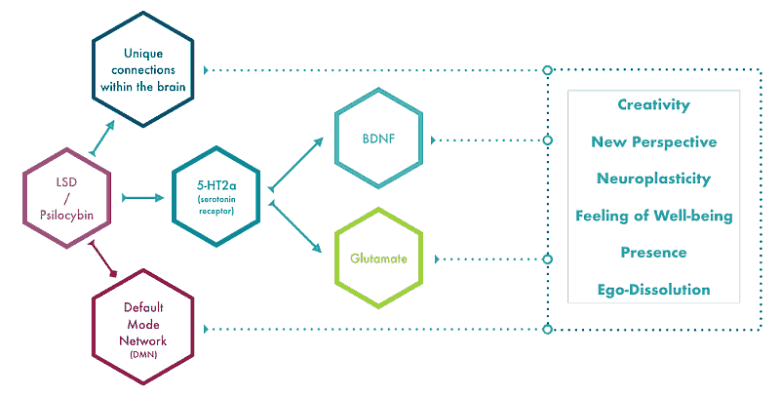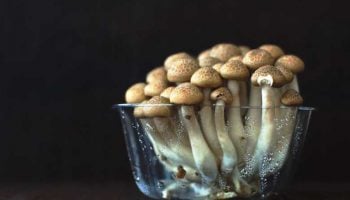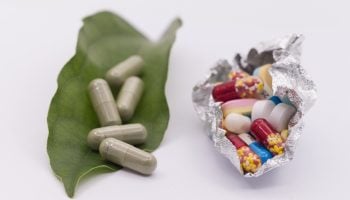The Ultimate Guide to
Microdosing
LSD
(Acid, L, Tabs, Blotter, Doses)
LSD is a potentially illegal substance, and we do not encourage or condone the use of this substance where it is against the law. However, we accept that illegal drug use occurs, and believe that offering responsible harm reduction information is imperative to keeping people safe. For that reason, this guide is designed to ensure the safety of those who decide to use the substance.
Overview
01Studies into the effects of microdosing LSD have remained few, and until last year, centered around self-reported research. In May 2019, the results of a double-blind study in the journal of Biological Psychiatry focused on the acute behavioral effects of microdosing and found that “single microdoses of LSD produced orderly dose-related subjective effects in healthy volunteers [and] that a threshold dose of 13μg of LSD might be used safely in an investigation of repeated administrations.”
In other words, clinical research has proven that microdosing LSD is not a placebo.
For those who have examined the research, perused testimonials from participants in the qualitative studies, or tried microdosing firsthand, the results of this double-blind study are not a surprise. A recent survey of over 1,000 people from 59 countries who microdosed LSD for at least one week and up to four months found that these people reported elevated mood, decreases in depression, increases in energy and productivity, and adoption of better health habits.
A separate study also found that microdosing LSD can boost creativity and problem solving skills in healthy individuals.
Thanks to positive results coming from scientific studies and anecdotal reports, the phenomenon is spiking worldwide interest. You can read about microdosing LSD in virtually any major online media outlet these days, including the NY Times, The Guardian, Independent, and Futurism.
Experience
02How Do You Microdose With LSD?
Microdosing with LSD is a fairly straightforward process. Essentially, you need to prepare your microdoses with volumetric dosing, consume the microdose at the appropriate time, and follow a month-long protocol to ensure you experience certain benefits. We outline each one of these elements in more detail below. Also, see our guide on How to Find LSD.
Preparing Your Microdose
Ideally, a microdose will not cause a substantial change in mood, disposition, or mindset. Instead, its effect will be subtle but present. For finding this balance with LSD, a typical microdose is somewhere between 6 and 20 micrograms. This is equal to about 1/16th to 1/5th of a single tab.
When microdosing with LSD on blotter paper, there are two methods to prepare a microdose: cutting or volumetric.
The cutting method is exactly what it sounds like: cutting the blotter paper into smaller doses with an Exacto knife or scissors. The drawback to this method is a lack of precision—the size of your doses may vary. When LSD is “laid” on a tab, a crystal of the substance is dissolved into a liquid medium then spread across the blotter paper. Sometimes, the liquid can distribute unevenly, causing variation in the amount of LSD in any given microdose.
The volumetric method is much more precise. It involves submerging a full tab into distilled water and taking small, measured quantities of the water to microdose. To do this, drop a 100ug tab into 10ml of distilled water or alcohol. Leave it for a day or so, and keep it in the dark. Once the LSD has come fully off the tab, 1ml of the liquid will contain 10ug of LSD. You can store your liquid in the fridge and it should last for months.
Check out our more detailed guide on Volumetric LSD Microdosing.
What Schedule Should I Follow?
Experts in this area suggest different microdosing regimens, but our microdosing course follows James Fadiman’s system. Fadiman recommends taking a microdose once every three days: Take a microdose on Day 1. Then, do not take a microdose on Day 2 or Day 3. On Day 4, take another microdose.

Continue this process for several weeks.
Paul Stamets recommends a different microdosing protocol—though his method is specifically for psilocybin. He suggests taking a microdose every day for five days, then taking two days off to avoid building up a tolerance.
For most people, morning is the best time because the beneficial effects will last throughout the day without interfering with sleep. It’s also helpful to take daily notes in a journal to observe the effects throughout this process and adjust accordingly—or just notice the positive changes.
It’s also important to follow your usual routine while microdosing. The purpose is to enhance your day-to-day existence by integrating microdoses into your routine, so don’t change what you normally do. However, when you try microdosing for the first time, take a day off from work and social commitments. This will give you a chance to notice any unusual effects before microdosing in a more public situation.
While it may seem like you would only feel the effects of the microdose on the days you actually take it, try to observe the effect on the two days between doses, too. Many people perceive increased feelings of flow, creativity, and energy the day after they microdose in addition to the day of microdosing.
Microdosing every day is not recommended. Because your body produces a tolerance to LSD, you might see diminishing returns after a few days if they are taken every day. This is why Fadiman suggests leaving a couple of days between each dose. Plus, the fact that positive effects can sometimes be felt many days after a microdose is a good reason to space out your doses.
Another downside to microdosing every day is normalizing a very potent substance. You can compare it to the use of coffee (or Adderall, for that matter) for productivity purposes. When you drink coffee every day, over time you need to increase the dose to get the same effect. Within a couple of months, one cup turns into two, three, or four cups. It is best to leverage microdosing as an occasional advantage, rather than a consistent go-to like coffee.
Microdosing Retreats
For people who are new to psychedelics, even microdosing can be a daunting concept. Retreats are a great option for those who want to be introduced to psychedelics surrounded by experts in a guided, personalized setting. More specifically, curated microdosing retreats could be an option for people looking to begin their microdosing journey, and could be the best way to translate the psychedelic experience into lessons for living a better life.
Though focused on psilocybin microdosing, Rise Wellness Retreat on the South Coast of Jamaica offers an all-inclusive retreat that includes workshops and classes held by certified wellness professionals.
Getting started with psychedelics and finding consistent legal access is a challenge. That’s why we built an online community of trusted providers ranging from therapists to clinics, to retreats. We hope you find what you’re looking for.
Effects
03What Does Science Tell Us About Microdosing LSD?
While there has been some recent research on microdosing, we know a lot more about what large doses of psychedelics do to the brain.
Much of what we understand about how psychedelics work involves serotonin, a chemical that is among the brain’s most important neurotransmitters. Serotonin affects nearly everything we do, from how we feel to how we process information. It keeps our brains ticking.
Psychedelics such as LSD and psilocybin share a similar structure to serotonin and mimics the chemical’s effects. This is why these substances have comparable effects to a full dose when microdosed, at least in the most important aspects described in the Benefits and Risks section of this guide. You can learn more about the differences between microdosing LSD and psilocybin here.
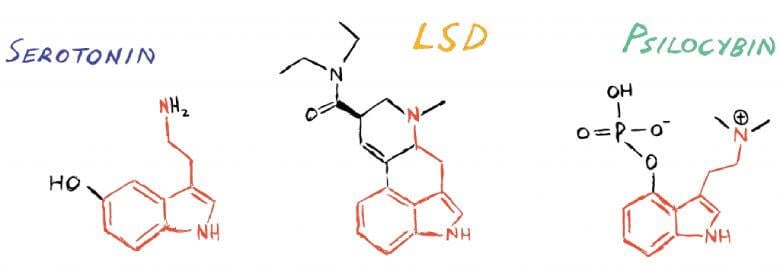
Because serotonin is so important to mood stabilization, common antidepressants (called Selective Serotonin Reuptake Inhibitors, or SSRIs) increase the levels of serotonin in the brain, which can make you feel happier.
Psychedelics work more directly by mimicking serotonin. One of psilocybin’s main effects is to stimulate a serotonin receptor called “5-HT2A” located in the prefrontal cortex, which leads to two important results:
- The production of “Brain-Derived Neurotrophic Factor” (BDNF), a protein that is “like Miracle-Gro for your brain,” according to Waldman. BDNF stimulates growth, connections, and activity. [1]
- The increased transmission of “Glutamate,” a neurotransmitter responsible (in part) for important brain functions such as cognition, learning, and memory. [2]
Glutamate and BDNF work together in ways we’ve yet to fully understand, but it’s become clear Psychedelics also cause parts of the brain that don’t usually communicate with one another to start talking, so to speak. These unique connections are formed by psychedelics’ ability to dampen the activity of an often over-used part of our brain called the “Default Mode Network” (DMN). [3] The DMN is responsible for many mental activities, including day-dreaming, self-reflection, and thinking about the past or the future. But research shows that a highly active DMN causes us to ruminate, over-analyze ourselves, and step out of the present moment to question the past and the future, all of which can make us unhappy. In fact, some studies suggest that depression is linked to an overactive DMN. [4] This helps explain why psychedelics could be used to combat depression and anxiety—as well as lead to insights and creative perspectives that may otherwise remain inaccessible. Learn more about how microdosing LSD compares to antidepressants for mental health conditions.
Recent Research
As we mentioned above, most research into the efficacy of LSD have focused on macrodoses. But researchers are starting to study the effects of microdosing—and are seeing promising results. In late 2019, the company Eleusis conducted one of the first placebo-controlled clinical trials investigating the effects of microdosing LSD to treat Alzheimer’s disease and found that the treatment was safe, paving the way for larger trials. Eleusis is also looking into psychedelics as a treatment for chronic inflammation.
The Beckley Foundation is also committed to researching the potential therapeutic applications of microdosing LSD. The organization’s first study investigated the short-term effects of singular microdoses on creativity, cognitive function flexibility, and wellbeing. Soon, the foundation will conduct a study involving consistent microdoses of LSD over a period of four weeks.
The Psychedelic Research Center at the prestigious Johns Hopkins Institute continues to expand under the direction of Dr. Roland Griffiths. To date, they’ve mainly focused on psilocybin research, but have conducted some studies on LSD as well.
The psychedelic start-up MindMed is also researching the potential of microdosing LSD to treat adult ADHD and addiction. Furthermore, recent research is also exploring LSD and other psychedelics in treating bipolar disorder.
Master the Skill of Microdosing
Enter your info to start your journey on Third Wave's Microdosing Course! Discover a science-based framework for transformational microdosing.
"The course gave me hope, a new way from what I've read and researched before. It has content which any reader can relate to whether you're an addict, an alcoholic or someone suffering from depression or other mental or spiritual ailments. I now feel empowered to take responsibility for my life!"
-Melissa P.
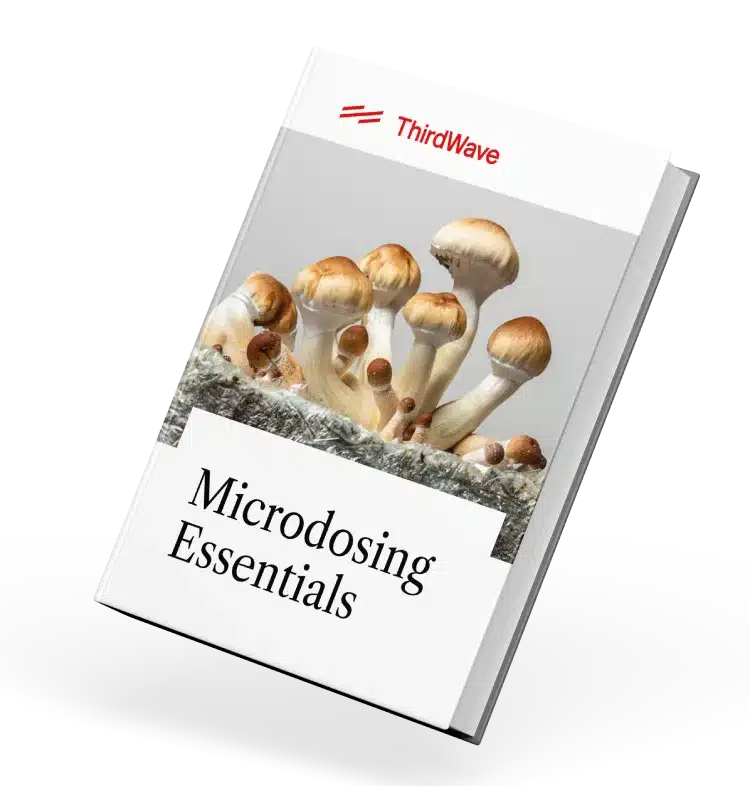

Master the Skill of Microdosing
Enter your info to start your journey on Third Wave's Microdosing Course! Discover a science-based framework for transformational microdosing.
"The course gave me hope, a new way from what I've read and researched before. It has content which any reader can relate to whether you're an addict, an alcoholic or someone suffering from depression or other mental or spiritual ailments. I now feel empowered to take responsibility for my life!"
-Melissa P.
Benefits and Risks
041. To reduce the frequency and intensity of undesirable states caused by various forms of mental illness including:
- Depression
- Anxiety
- ADD/ADHD
- Mood disorders
- PTSD
- Addiction
2. To increase the frequency and intensity of desirable states/outcomes, including:
- Creativity
- Energy
- Flow states
- Productivity/focus
- Improved relationships/increased empathy
- Athletic coordination
- Leadership development
Desirable States
Many people microdose for personal development or for the purpose of self-optimization. Reports suggest that the practice can improve creativity, productivity, and energy. Countless people also microdose to help them solve work-related problems, create new concepts, or to reduce procrastination. Microdosing can also help you by improving your social interaction skills, athletic performance, and spiritual awareness.
Here are a few testimonials from Third Wave survey respondents on how microdosing helped them reach desirable states:
“Since microdosing I have come out of my shell. I have become more confident around other people and have formed an intimate relationship with another person where I have had difficulty in the past.”
“Microdosing LSD has been a very positive experience – it keeps me very present, focused, creative, and overall induces a deep sense of contentment! I found that taking it before going to my parents place made the family dynamic so much more enjoyable. It also has been great in terms of connecting with my partner.”
To learn how entrepreneur Janet Chang microdosed to improve creativity and work performance, listen to our interview here.
Risks
By far, the riskiest thing about microdosing LSD is the law. It’s crucial to check your local laws before microdosing, as the penalties for LSD possession are still harsh in most of the world. It’s possible to microdose LSD legally if you live in one of the handful of countries that adopt a mild-to-forgiving stance on this substance. Otherwise, make sure to follow your local laws.
A legally viable alternative to LSD may be the increasingly popular 1P-LSD. This compound is almost exactly like LSD in its molecular structure, and it has comparable beneficial effects. However, some users report that 1P-LSD must be microdosed in considerably lower quantities than LSD due to intense side effects, including anxiety, ruminations, and hyperactivity. If you attempt to microdose 1P-LSD, we recommend starting off at an extremely low dose, such as 1 microgram.
In the US and Canada, 1P-LSD can be purchased as a “research chemical” labeled “not for human consumption.” In Europe (including the UK), it’s illegal.
Another option is ALD-52, a similar “research chemical” that is available online in Europe as well as in North America. Some users say it provides a smoother, gentler, and more relaxing microdosing experience than LSD.
Aside from the legal qualms, if you microdose LSD, there is a slight risk that someone around you will notice that you’re “on something.” Increased alertness, productivity, and creativity can be explained away, but not dilated pupils.
It’s hard to say if microdosing LSD will for sure cause your pupils to dilate—it varies from person to person. The general consensus on Reddit seems to be that 20 micrograms of LSD is the threshold where most people’s pupils will start expanding. However, there are reports by people who have this happen at nine or even seven micrograms. This is another reason we advise you not to start microdosing LSD on a day when you need to be in a socially saturated environment.
Other than these few concerns, microdosing is proving to be a safe, non-threatening introduction to the benefits of psychedelics. LSD has a long track record of safe use, and there are a number of benefits to using LSD when done safely. Combine that small dose amounts, and microdosing appears to be safe.
As you can see in the graph below, LSD is one of the safest substances you can find, both biochemically and socially. It’s even safer than alcohol.
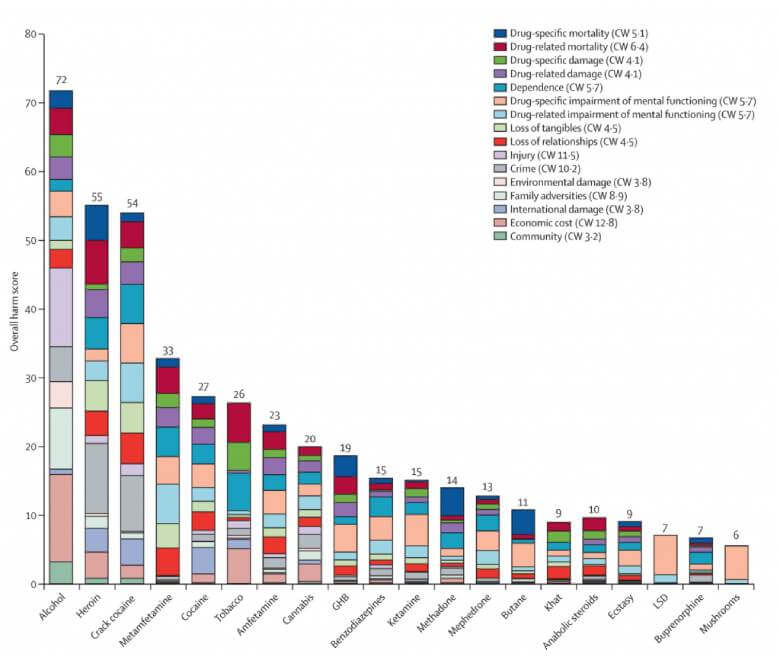
That said, psychedelics are powerful substances, and even microdoses have a risk potential. Emotional turbulence or anxiety is possible while microdosing, largely due to psychedelics’ “amplifying effect.” LSD tends to amplify your current mood rather than act as a stimulant or numbing agent. For this reason, it is important to assess your mindset before consuming a microdose.
Since there is no clinical research on the safety of microdosing, it’s best to avoid microdosing for extended periods of time (longer than a few months). In fact, chronic microdosing does come with a potential heart risk.
According to psychiatric pharmacist Kelan Thomas, long-term use of microdosing could cause valvular heart disease (VHD) due to changes to the heart valves induced by psychedelics’ activation of the serotonin 2B receptor (5HT2B). In fact, several FDA-approved medications with 5HT2B receptor activation have been withdrawn from the U.S. market due to the risk of VHD with heart valve thickening and murmurs. While psychedelics mostly activate this receptor at high doses, Thomas suggests that even small doses will cause similar effects, making chronic use potentially dangerous.
Microdosing LSD and Mental Illness
We also recommend discussing the risks with your physician if you suffer from psychosis, schizophrenia, or severe anxiety. When overdone, microdosing can lead to manic states, which could exacerbate underlying conditions.
While there is no conclusive evidence suggesting that psychedelics can activate latent mental health problems, many scientists subscribe to this theory.[7] With this in mind, if you have a family history of mental illness (especially schizophrenia), it’s advised that you avoid any psychedelic drug.
One long-term (although rare) effect of psychedelic use is hallucinogen persisting perception disorder (HPPD). HPPD is characterized by a continual presence of sensory disturbances, most often visual, sometimes continuing for months or years following psychedelic use. It can be treated with antipsychotic or antiseizure drugs. HPPD is rare, but is more likely to occur if psychedelics are taken outside of a safe, responsible situation (i.e. without adhering to the 6 S’s).[8]
Numerous studies have also found no evidence of chromosomal damage or developmental defects in humans caused by LSD. However, in mice, LSD administered during pregnancy did cause some developmental damage at extraordinarily high doses (up to 500 µg/kg).[9]
For more on the side effects and risks, see LSD Side-Effects: Risks To Be Aware of When Consuming LSD.
Professional Development
05Flow States
At some point in our lives, most of us have likely experienced “flow,” or the mental state in which a person is fully immersed in a feeling of energized focus, presence, and total enjoyment in the process of an activity. This can be the surfer effortlessly riding a big wave, the salesman elegantly working the room, or the writer who looks up from the page to realize night has fallen.
Simply put, flow is one of the great experiences of being human. We have no clinical evidence to suggest that microdoses of psychedelics can induce flow states, but studies have shown that moderate doses cause brain waves to shift toward alpha oscillations, which is also seen in the transition to a flow state [5]. Additionally, higher levels of serotonin are found during flow states.
LSD and other psychedelics imitate the serotonin neurotransmitter when they enter the brain, and we know that serotonin is found in higher levels in flow states. Similarly, LSD increases the levels of dopamine in the brain, which is another neurotransmitter found in higher levels in flow states. [6]
Perhaps most important, though, psychedelics’ ability to quiet the DMN creates an opportunity for our brains to make unique connections between areas that don’t usually communicate. [3] This is crucial to accessing flow states.
Since we know that moderate doses of psychedelics can induce similar effects to a flow state in the brain, it seems likely that a regular microdosing regimen could begin to shift our awareness in the direction of flow.
Learn more about psychedelics and flow states here. You can also listen to our interview with flow state expert and Director of Research for the Flow Genome Project, Steven Kotler, here.
Microdosing LSD and Leadership
Change and innovation are happening faster than ever these days, and leaders need to adapt quickly. Great leaders must come up with creative solutions to unexpected issues and problems, turning potential setbacks to their advantage. Staying at the forefront of any field requires mastering new technology and being open to novel ways of accomplishing tasks, taking both short and long term needs into account.
Additionally, modern leadership is becoming less hierarchical, dominant, and aggressive (archetypal “masculine” traits) and increasingly requires the ability to cultivate space to allow the best people to step in and contribute their highest gifts (archetypal “feminine” characteristics).
Microdosing helps to accelerate this developmental process for the next generation of leaders by facilitating enhanced creativity, mental flexibility, and honest self-reflection. Microdosing also improves self-confidence, which enables you to be more in touch with your emotions and helps you better communicate.
To learn more about how microdosing can help with professional development, check out this talk from Third Wave founder Paul Austin.
Beyond LSD and Psilocybin is a field. This guide will take you there.
In Third Wave’s Ultimate Guide to Safely Sourcing Psychedelics, you will discover an astonishing menu of psychedelic medicines…
…and how to source them without legal risk.
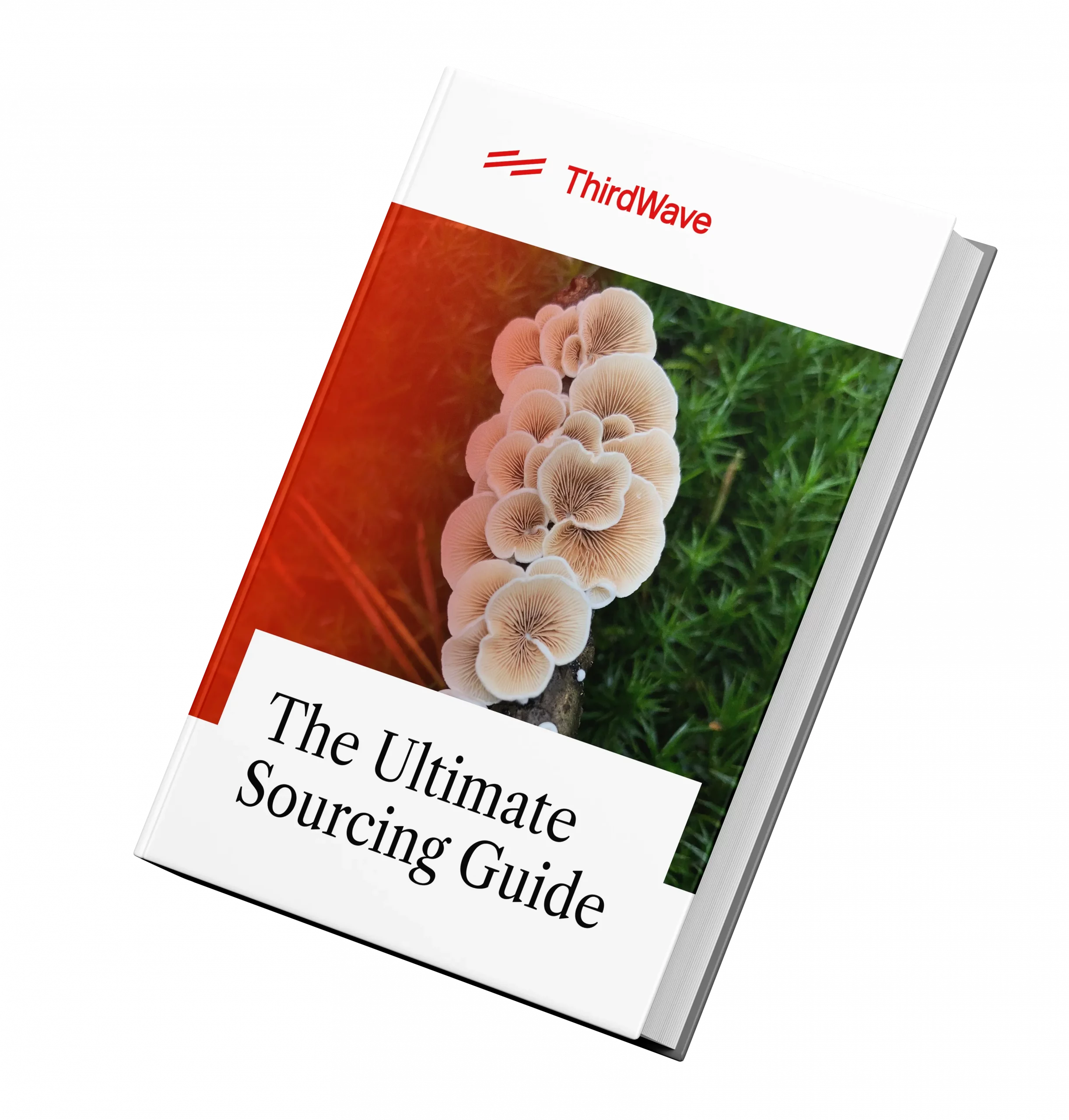

Beyond LSD and Psilocybin is a field. This guide will take you there.
In Third Wave’s Ultimate Guide to Safely Sourcing Psychedelics, you will discover an astonishing menu of psychedelic medicines…
…and how to source them without legal risk.
Therapeutic Use
06If you microdose while attending therapy, you may find that issues and topics that previously felt difficult to reach are suddenly accessible. You may also notice creative insight into yourself, your past, and your relationships that you didn’t before.
Here are a few testimonials from Third Wave survey respondents on how microdosing helped them overcome undesirable states:
“Microdosing doesn’t allow me to be anywhere else but in the present moment. This has helped me tremendously with my anxiety and depression. I am incapable of worrying about what’s going to happen next week, tomorrow, or even five minutes from now. I can function without anxiety for the first time in years. I feel that my attention span is greater, I’m concentrating like never before. When I was suffering with pain, I was given a lot of prescription pain pills and was quickly becoming addicted to them. Microdosing instantly helped me stop taking the several pills a day I was taking just so I could get out of bed, and I haven’t touched them since.”
“I have fought depression for some 6-7 years since adolescence, microdosing has, so far, consistently helped me get on with my day-to-day, just as much on no MD days as MD days. This also applies to Social & General Anxiety which has been less severe but experienced for the same period.”
“I overcame my depression with microdosing because I can consistently be productive and happy with it as a creative booster. It also eliminates any anxiety I get because I never used to raise my hand in class. I smoke a lot of cannabis and it’s unhealthy to overindulge. I found microdosing to make me feel the need to be productive so I smoke much less when I microdose and don’t indulge just to smoke.”
If you want to learn more about how microdosing can help you within a therapeutic container, get access to Third Wave’s Official Microdosing Course.
Macrodosing
07Additionally, a recent review of 25 years of research (1990-2015) on LSD—as well as psilocybin and ayahuasca—found that results consistently suggested psychedelics showed great potential to treat anxiety disorders, depression, and addiction.
In a double-blind study involving individuals with life-threatening diseases, LSD psychotherapy sessions were also found to reduce end-of-life anxiety. Twelve months later, the effects of this intervention were still present. Improvements were also seen in a cancer quality-of-life questionnaire and a hospital anxiety and depression scale.
Addictive disorders, especially alcoholism, have long been a target of psychedelic therapies. A 2012 meta-analysis of six randomized control trials including 536 subjects confirmed the efficacy of a single dose of LSD in treating alcoholism. Results from these studies showed that LSD had a success rate of 81% to 100% for treating alcoholism when success was defined as abstinence at first follow up.
To learn more about macrodoses of LSD, check out our LSD essential guide.
Microdosing Mushrooms vs LSD
08There are many factors to consider when choosing a compound for microdosing, and one is not necessarily better than another. But as far as the experience goes, microdosing mushrooms vs microdosing LSD can produce qualitatively different outcomes.
Mushrooms tend to dissolve the ego by immersing the user in their surroundings, which can be real or imagined. They promote deep introspection and meditation. It’s likely you will feel a deeper connection to, and understanding of, the ancient rituals that used mushrooms. Think grounded feelings, tactile undulations. Even with a microdose, you may still experience the sensation of being plunged into your mushroom trip.
LSD will dissolve the ego through the sheer clarity of experience. Sounds, colors, and interactions will seem to happen smoothly and without your involvement. You will feel at home both on a walk in the woods and at a coffee shop in the city. It’s flexible, forgiving, and uplifting. LSD feels like something designed to improve you. If you plunge into the depths of mushrooms, you emerge from the surface with LSD.
To learn more about the differences between the two, see Microdosing LSD vs Microdosing Mushrooms.
Legality
09You can also check out our full article on the legality of various research chemicals that you could use for microdosing. Or read more on the legality of LSD: Legal Status Of LSD And 1P-LSD.
Pharmacology
10When ingested, LSD acts as a 5-HT (serotonin) receptor activator but also deactivates systems that regulate serotonin levels, increasing the chemical in the brain. Of the 15 serotonin receptors in the brain, LSD mostly prefers the 2A subtype (5-HT2A), which is involved in cognitive processes in the prefrontal cortex, the area of the brain responsible for complex cognitive behavior, personality expression, decision-making, and social behavior. It also plays a key role in our ability to process information from other brain systems and make goal-directed decisions.
History
11Beyond coining the term, The Psychedelic Explorer’s Guide awakened the curiosity and imaginations of millions of people and provided practical information for anyone interested in giving microdosing a try. Much of this information has been integrated into this guide.
Outside of the book, Fadiman’s ongoing research also serves as one of the few modern studies into the effects of microdosing specifically—most current psychedelic research looks at the effects of larger doses on specific therapeutic outcomes.
Following the publication of The Psychedelic Explorer’s Guide, the next boost in the public’s awareness of microdosing came from a podcast interview Fadiman gave with investor and author Tim Ferriss in March 2015. Ferriss, who rose to fame after authoring the bestseller, The 4-Hour Work Week, has an enormous audience of individuals interested in entrepreneurship, “biohacking,” self-experimentation, psychology, spirituality, and other subjects that predispose them to an interest in the benefits of microdosing. The interview boosted Fadiman’s core microdosing messages and created more mainstream interest in the practice: soon after its air date, Ferris fans began experimenting with microdosing and discussing it in their own personal networks. Journalists also jumped on board and began writing articles about microdosing, creating even greater awareness and interest. And there’s been no shortage of personal microdosing accounts from entrepreneurs and executives in Silicon Valley.
Interest in microdosing got another boost when author Ayelet Waldman’s published her 2016 book, A Really Good Day: How Microdosing Made a Mega Difference in my Mood, My Marriage, and My Life, which tracked her 30-day protocol of microdosing LSD to her unstable moods caused by menopause. Before she started microdosing, Waldman says her mood swings had become severe enough to put her marriage and relationship with her children at risk. After the 30-day protocol, everything changed. “This month changed my life,” she said in an interview with Third Wave, “and I am sad every day that I can’t keep doing it legally.”
Mycologist and psilocybin-enthusiast Paul Stamets has also had a hand in pushing microdosing into the mainstream. One of the most reputable, decorated, and self-practiced mycologists in the world, Stamets has dedicated his life to the study of medicinal and psychedelic fungi. His most recent patent application is for a nootropic stack (a combination of cognitive enhancers) that contains a microdose of psilocybin, lions mane, and niacin. He would like to see this supplement available as a vitamin, claiming that its efficacy in epigenetic neurogenesis has the potential to initiate “the next quantum leap in human consciousness.”
Now, tens of thousands of people around the globe are experimenting with taking small doses of psychedelics in the name of mental health, creativity, and inspiration.
FAQ
12Can LSD be detected in a blood test?
The short answer is yes, but there are a few caveats. The level of LSD found in urine reaches a peak about four to six hours after taking a dose, but even then, the amounts are pretty small. There are four known major metabolites of LSD that can be detected in urine for up to four to five days after ingestion, but its detectability varies from person to person.
There are several criteria that determine how long LSD can be detected in the body:
- the test being used
- the detection limit placed on the test
- the point of collection
- the type of sample fluid
- the amount that was ingested.
The average time LSD can be detected in blood is six to 12 hours. In urine, it’s two to four days. However, one metabolite (2-oxo-3-hydroxy-LSD) is typically present in higher concentrations and can be detected for longer periods of time in urine.
Tests for LSD (but not its metabolites) in hair samples are also available and they’re good for detecting both low doses and single uses, apparently for an underdetermined but long period of time after dosing. However, this is not typically included in standard drug screens.
Learn more about drug tests for LSD
Can I test my LSD to see if it’s safe to take?
Testing your LSD is always good practice even when you trust your supplier. Reagent test kits from Bunk Police can identify hundreds of adulterants and substitutes, offering peace of mind and potentially saving your life.
25I-NBOMe, for example, has on occasion been mis-sold as LSD with tragically fatal consequences. The Ehrlich reagent can help to rule it out. Simply place a tiny amount of LSD into a sterile test tube or onto a sterile white ceramic surface and add a few drops of the reagent. Then check the color change (or lack thereof) against the supplied spectrum booklet.
Do I have real LSD?
Depending on the dose and route of ingestion, LSD should take 45-90 minutes to kick in. The experience can last 12-16 hours. Click here to see a full list of the effects.
If you feel any other effects, or your experience lasts considerably longer than 16 hours, you may not have taken LSD. If your blotter paper had a bitter taste or numbed your tongue, it may have contained NBOMe or DOx.
It’s safest to be sure about what you’re taking, so if possible, get your drugs tested. Kits for home testing can be found online, or you can send your substance to a lab for testing.
Where can I get LSD?
Getting started with psychedelics like LSD and finding consistent legal access is a challenge. That’s Third Wave we built an online community of trusted providers ranging from therapists to clinics, to retreats. We also curated a detailed psychedelics sourcing guide to help you purchase from trustworthy vendors. Whatever your preference, we hope you find what you’re looking for.
Beyond LSD and Psilocybin is a field. This guide will take you there.
In Third Wave’s Ultimate Guide to Safely Sourcing Psychedelics, you will discover an astonishing menu of psychedelic medicines…
…and how to source them without legal risk.


Beyond LSD and Psilocybin is a field. This guide will take you there.
In Third Wave’s Ultimate Guide to Safely Sourcing Psychedelics, you will discover an astonishing menu of psychedelic medicines…
…and how to source them without legal risk.
Is microdosing illegal?
Microdosing is not necessarily illegal. Several countries allow the cultivation of Psilocybin Mushrooms, the purchase of Psilocybin truffles, or the purchase of LSD analogues. We do not condone microdosing where it is against the law, as penalties can be severe.
Is microdosing safe?
The riskiest thing about microdosing is its potentially illegal nature. Always be aware of your local laws and don’t undertake any illegal activities.
The first ever controlled, double-blind study of microdosing LSD and psilocybin suggests that the practice is more effective than a placebo and that it is safe. Clinical studies of larger doses of LSD and psilocybin mushrooms (or “magic mushrooms”) have also shown that these substances are extremely safe.
What we don’t know is what effects frequent microdosing could have on the body. This is why we recommend microdosing for no longer than a few months at a time.
One thing is for certain, though—with microdosing, there is no risk of having a “bad trip” or experiencing intense psychedelic effects. Taking a microdose is the ideal introduction to psychedelics.
How do I get started with microdosing?
There are lots of things to cover before you get started, like how to source the medicine, and what you need to know depends partly on the reasons you’re interested in the first place.
Our extensive Microdosing Course will give you access to curated materials that will help you design the ideal microdosing regimen for your needs. You’ll also gain access to an exclusive community of enthusiastic, helpful microdosers.
Footnotes
13[1] Ayelet Waldman (2016) “A Really Good Day: How Microdosing Made a Mega Difference in My Mood, My Marriage, and My life”
[2] Riedel, Platt & Micheau (2003) doi:10.1016/S0166-4328(02)00272-3
[3] Carhart-Harris et al. (2016) doi:10.1073/pnas.1518377113
[4] Sambataro et al. (2014) doi:10.1017/S0033291713002596
[5] Kometer et al (2013) doi:10.1523/JNEUROSCI.3007-12.2013
[6] Nichols (2016) doi:10.1124/pr.115.011478
[7] Nichols D.E. (2004) Hallucinogens. Pharmacology & Therapeutics, 101, 131-181. Retrieved from: https://www.sciencedirect.com/science/article/abs/pii/S0163725803001657.
[8] Nichols D.E. (2016). Psychedelics. Pharmacological Reviews 68(264-355). Retrieved from: http://pharmrev.aspetjournals.org/content/pharmrev/68/2/264.full.pdf.
[9] Annelie Hintzen, Torsten Passie (2010). The Pharmacology of LSD: a critical review (p.78). Oxford University Press. Retrieved from: https://amzn.to/3eBirGd.
